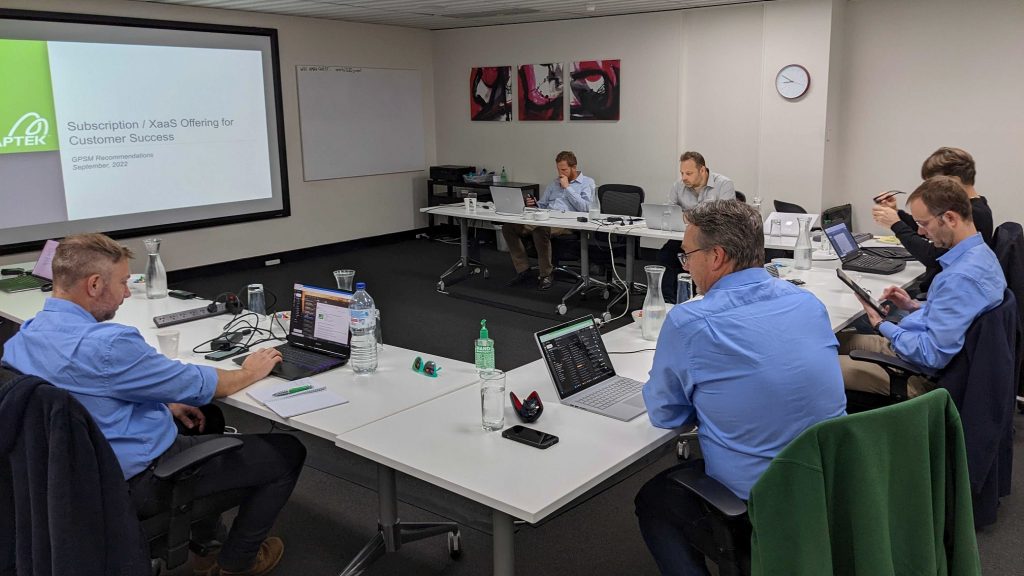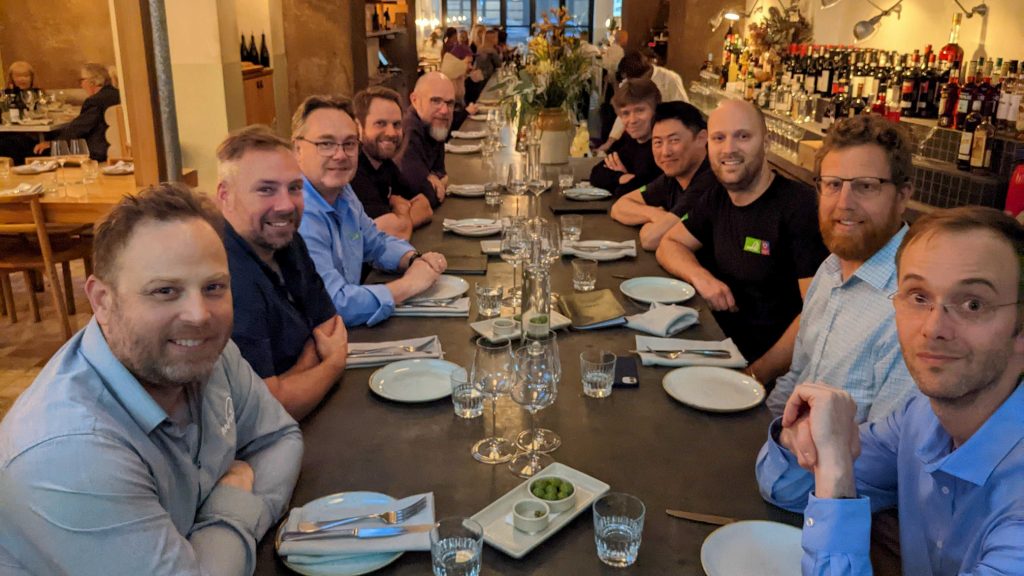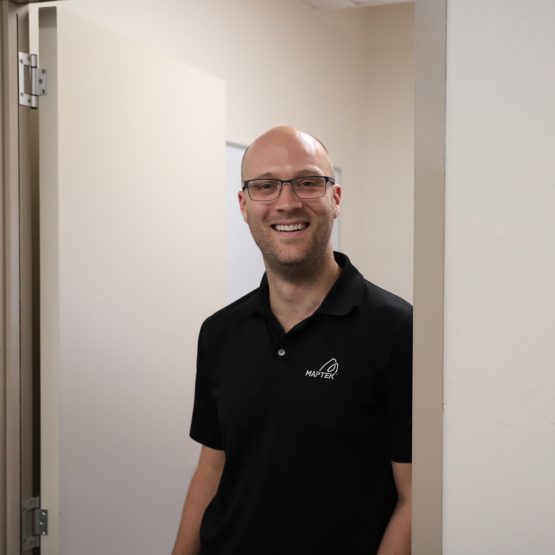Strategy and planning combine to meet industry needs
When Maptek Global Strategy Managers from across the world gathered in Adelaide, South Australia recently it was the first time they had all been under the same roof. The pandemic prevented physical meetings in recent years, but didn’t stop strong collaboration through virtual channels among the nine managers of Maptek product and development strategy.
On the back of the get-together, Adelaide-based Global Development Strategy Manager Will Reid and Global Product Strategy Manager Jesse Oldham, who is based in Salt Lake City, share their thoughts on the relationship between the overarching vision of the organisation and everyday planning and operation.
How do you explain the difference between strategy and planning?
Will : Our Maptek ‘Strategy’ job title refers to the way we look to review and adjust product offerings and development processes based on the future industry needs. Once we define that strategy, we can plan for it. If we don’t continue to look at our strategy, we will end up being reactive to change, rather than anticipating it!
Jesse: I see planning as laying out the tactical steps to guide us in execution. Strategy is what lays out the bigger picture and helps to guide us on where we need to be and when. Strategy informs the plan, which informs the execution.

A key strategic initiative is to empower users to make better decisions every day.
Which comes first – planning or strategy?
Will: You can’t plan something if you don’t have a strategy for what you’re working towards. A strategy is typically quite broad, whereas a plan is focused on executing one portion of that strategy.
What’s the difference between product strategy and development strategy?
Will: Product strategy tells us what kind of problems our customers want us to solve in the future. Development strategy looks to match those requirements with the best way to present it to them. As an example, one of our newest products – GeoSpatial Manager – provides users with a single source of truth for surface scans. This is product strategy. It is being delivered through a web service, meaning people can access GeoSpatial Manager from any web browser. This highlights our development strategy.
What are three key strategic initiatives for Maptek?
Will: We want to empower our users to make better decisions every day. We aim to do that by providing our solutions in easier ways, through the use of web services and simpler licensing. Secondly, improving customer experience and ultimately their success! Thirdly, we aim to become the premier solution provider for integrated mining services. When we get together we look to address how the product and development teams can support all our strategic initiatives with these areas front of mind.
Strategy is not just for the highest level – how does it filter down in an organisation?
Will: Ultimately, the strategy has to be accepted by the various team leads and software developers. You can’t expect people to be excited about what they are working on if they don’t understand the project or believe in the outcomes. At Maptek we inform the wider business, followed by more in-depth meetings with our team leads, listening to their comments and concerns along the way and making adjustments as needed.
Jesse: Building on Will’s comment, as we execute on our strategy we want to involve all layers of the organisation to continually inform the success of the strategy and execution. We want to involve all areas, levels and regions to take advantage of different contributions and skills. Of utmost importance is input from our clients, providing a continuous feedback loop to measure success and reset if necessary.

Meeting in person is an invaluable way to strengthen relationships and drive collaboration.
One of the key strategic objectives in the Maptek 5-year plan includes accelerating planning cycles to efficiently deliver products without compromising quality.
What strategies do the development strategists set to achieve that?
Will: The most effective approach is to provide development teams easier methods to release their work more often. Planning for releases is definitely an involved process, so streamlining those elements and making each phase as quick and effortless as possible will allow for changes to go out more frequently and seamlessly.
Delivering solutions to market in new ways allows us to provide updates to users instantly! When your chosen email provider changes the look and feel of their service – there’s no changes to install, it opens and runs, hopefully with a few days notice.
What about the product managers?
Jesse: We aim to refocus all our solutions and services around customer success. This means paying attention to the problems solved, to the user experience, and to the way customers access and subscribe to our solutions.
Another key objective is to ensure technical interoperability and/or integration between our products and our partners. What are the challenges with that and how does Maptek solve them?
Will: Older technologies can limit our potential for integration, but this doesn’t mean it’s impossible. To expose areas of our functionality to our other software products or that of external partners, agreeing on open standards of communication is the easiest way forward. We can do this using open APIs, the industry standard for sharing information between services. Over time I can see a Maptek Federation of Services, where products and services talk to each other seamlessly.
Jesse: The services that Will mentions here look to be an integral part of how we will deploy solutions in the future to the end user, as well as to help integrate with customer data teams and industry partners.
What tactics did Maptek use during the covid restricted travel period to ensure the right people were in the conversation around strategy?
Will: As for most of the world’s organisations, Maptek took a while to settle in to new routines. Moving to online meetings was somewhat complicated, as we wanted to ensure we had the right people in the meeting, which at times meant a large group of attendees who overall only needed to participate for parts of the discussion. Ultimately we settled on the right frequency and participants for our discussions. Determining strategy isn’t a quick exercise. The whole process will take several months, if not years. By then, we’re ready to start the whole process again. This is all part of the process of innovation – the strategic vision for Maptek is big, so we accept that navigating our way through it is going to take time.
Jesse: While it certainly was a challenge adapting to a new way of working with covid, the remote meetings made us think about our interactions in a different way. Rather than only having involvement from people in the room, we were able to broaden input and get feedback and buy in from various levels of the organisation.
Who helps to inform your strategy?
Will: It comes from everywhere! The further forward you look, the more risk there is – but there’s a greater potential reward. Discussions with our customers is our largest source of future needs. Our staff are also great contributors to new ideas. A recent cultural change sees staff being actively encouraged to explore their ideas – no matter how out of left field. Results from several experimental projects have been incorporated into solutions that customers are using today!
Jesse: As Will said, our customers and the interactions we have with them are paramount in helping us form strategy. The key is to not do so in a reactive way. Sure it’s important to understand current needs, but also to discern future problems that will be in need of a solution.
Will and Jesse agree that there are times that product and development strategy don’t align, but it’s not because they don’t see each other enough! Sometimes what the product needs to solve is at odds with the underlying architecture. When this happens, we stop and adjust our strategy – identifying and involving the right people to work out a new path forward. Then a new plan is formed and we continue – this is part of being agile .




